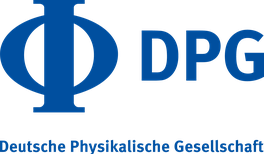
One of the central questions in cell biology is how the temporal and spatial organization of the cell machinery within the cell is established, maintained, and replicated. In Eubacteria, an understanding of the cellular organization of proteins is just beginning to take shape. Recent data suggests that there are geometric cues for the localization of proteins and lipids in bacteria. We found that microdomains of cardiolipin (CL) preferentially localize to regions of large, negative curvature. We use a top-down approach that combines in vivo and in vitro experiments with E. coli and B. subtilis cells. We find that a critical difference in the radius of curvature DC (curvature difference between cell poles and midcell) of approx. 0.5 1/mkm is required to drive the polar localization of MinD and DivIVA. Our data provides support for curvature as a general mechanism for regulating the spatial organization in bacterial membranes. This research expands our understanding of Eubacterial cell biology and provides insight into the spatial and temporal dynamics of membranes and their role in cell biology.

One of the central questions in cell biology is how the temporal and spatial organization of the cell machinery within the cell is established, maintained, and replicated. In Eubacteria, an understanding of the cellular organization of proteins is just beginning to take shape. Recent data suggests that there are geometric cues for the localization of proteins and lipids in bacteria. We found that microdomains of cardiolipin (CL) preferentially localize to regions of large, negative curvature. We use a top-down approach that combines in vivo and in vitro experiments with E. coli and B. subtilis cells. We find that a critical difference in the radius of curvature DC (curvature difference between cell poles and midcell) of approx. 0.5 1/mkm is required to drive the polar localization of MinD and DivIVA. Our data provides support for curvature as a general mechanism for regulating the spatial organization in bacterial membranes. This research expands our understanding of Eubacterial cell biology and provides insight into the spatial and temporal dynamics of membranes and their role in cell biology.